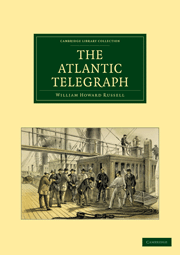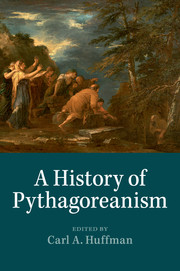Refine search
Actions for selected content:
13588 results in History of science and technology
Sources of Quotations
-
- Book:
- Science and Religion
- Published online:
- 05 June 2014
- Print publication:
- 15 May 2014, pp 543-547
-
- Chapter
- Export citation
III - The Parallel between Scientific and Religious Reform
-
- Book:
- Science and Religion
- Published online:
- 05 June 2014
- Print publication:
- 15 May 2014, pp 110-157
-
- Chapter
- Export citation
Acknowledgments
-
- Book:
- Science and Religion
- Published online:
- 05 June 2014
- Print publication:
- 15 May 2014, pp ix-x
-
- Chapter
- Export citation
Bibliographic Essay
-
- Book:
- Science and Religion
- Published online:
- 05 June 2014
- Print publication:
- 15 May 2014, pp 475-542
-
- Chapter
- Export citation
VII - Visions of the Past: Religious Belief and the Historical Sciences
-
- Book:
- Science and Religion
- Published online:
- 05 June 2014
- Print publication:
- 15 May 2014, pp 307-373
-
- Chapter
- Export citation
Frontmatter
-
- Book:
- Science and Religion
- Published online:
- 05 June 2014
- Print publication:
- 15 May 2014, pp i-iv
-
- Chapter
- Export citation
VI - The Fortunes and Functions of Natural Theology
-
- Book:
- Science and Religion
- Published online:
- 05 June 2014
- Print publication:
- 15 May 2014, pp 261-306
-
- Chapter
- Export citation
Index
-
- Book:
- Science and Religion
- Published online:
- 05 June 2014
- Print publication:
- 15 May 2014, pp 548-566
-
- Chapter
- Export citation
IV - Divine Activity in a Mechanical Universe
-
- Book:
- Science and Religion
- Published online:
- 05 June 2014
- Print publication:
- 15 May 2014, pp 158-205
-
- Chapter
- Export citation
V - Science and Religion in the Enlightenment
-
- Book:
- Science and Religion
- Published online:
- 05 June 2014
- Print publication:
- 15 May 2014, pp 206-260
-
- Chapter
- Export citation
Contents
-
- Book:
- Science and Religion
- Published online:
- 05 June 2014
- Print publication:
- 15 May 2014, pp vii-viii
-
- Chapter
- Export citation
Introduction
-
- Book:
- Science and Religion
- Published online:
- 05 June 2014
- Print publication:
- 15 May 2014, pp 1-21
-
- Chapter
- Export citation
Dedication
-
- Book:
- Science and Religion
- Published online:
- 05 June 2014
- Print publication:
- 15 May 2014, pp v-vi
-
- Chapter
- Export citation
II - Science and Religion in the Scientific Revolution
-
- Book:
- Science and Religion
- Published online:
- 05 June 2014
- Print publication:
- 15 May 2014, pp 69-109
-
- Chapter
- Export citation
‘The televising of science is a process of television’: establishing Horizon, 1962–1967
-
- Journal:
- The British Journal for the History of Science / Volume 48 / Issue 1 / March 2015
- Published online by Cambridge University Press:
- 06 May 2014, pp. 87-121
- Print publication:
- March 2015
-
- Article
- Export citation

The Atlantic Telegraph
-
- Published online:
- 05 May 2014
- Print publication:
- 02 June 2011
- First published in:
- 1866

A History of Pythagoreanism
-
- Published online:
- 05 May 2014
- Print publication:
- 24 April 2014
Pratik Chakrabarti, Bacteriology in British India: Laboratory Medicine in the Tropics. Rochester, NY: University of Rochester Press. Pp. x+304. ISBN 978-1-58046-408-6. £60.00 (hardback).
-
- Journal:
- The British Journal for the History of Science / Volume 47 / Issue 2 / June 2014
- Published online by Cambridge University Press:
- 01 May 2014, pp. 381-382
- Print publication:
- June 2014
-
- Article
- Export citation
Anne Van Arsdall and Timothy Graham (eds.), Herbs and Healers from the Ancient Mediterranean through the Medieval West: Essays in Honor of John M. Riddle. Farnham: Ashgate, 2012. Pp. xvi+377. ISBN 978-1-4094-0038-7. £80.00 (hardback).
-
- Journal:
- The British Journal for the History of Science / Volume 47 / Issue 2 / June 2014
- Published online by Cambridge University Press:
- 01 May 2014, pp. 369-371
- Print publication:
- June 2014
-
- Article
- Export citation
Lawrence M. Principe, The Secrets of Alchemy. Chicagoand London: The University of Chicago Press, 2013. Pp. v+281. ISBN 978-0-226-68295-2. £16.00 (hardback).
-
- Journal:
- The British Journal for the History of Science / Volume 47 / Issue 2 / June 2014
- Published online by Cambridge University Press:
- 01 May 2014, pp. 372-374
- Print publication:
- June 2014
-
- Article
- Export citation
